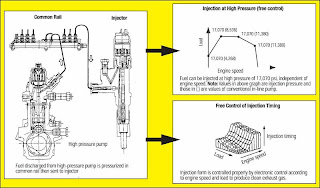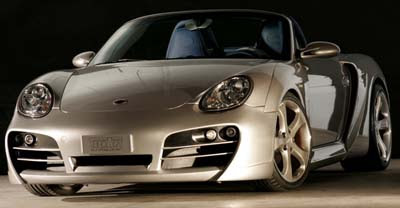

While we certainly cannot say the Zonda F lacks performance figures, driving around the Nürburgring in 7:32 and achieving lateral G forces of almost 1.5 G, it is however a road car, easy to drive, intuitive and setting the benchmark for comfort, safety and lightweight. Paired with a quality finish and the attention to detail this made the Zonda F one of the most desirable supercars resulting in the 25 Coupé models being sold out in record time.
The Zonda R is born with full liberty. The target: the ultimate performance at the racetrack without any implications of rules, except for safety, where no compromise is allowed. In September 2006 the first drawings were ready, but it was crucial to have the support of Mercedes-AMG for a high revving engine with a power output of 750hp, dry sump, light and with a low centre of gravity. The basis was the self supporting engine of the mighty CLK GTR, which has dominated the GT championships.
Eve at constant racing pace the engine would have to cover over 5.000 km before servicing. The challenge has been accepted without hesitation.
The Zonda R is a car designed from scratch, with only 10% of the Zonda F components to be carried over. The suspension forged in Avional, a new Pagani six speed transversal sequential gearbox, carbon fibre monocoque, aeronautical four pump fuel tank are only part of the equation.
The wheelbase has grown by 47mm, the overall length by 394 mm and the track is increased by 50mm. The bodywork and aerodynamics have been studied to offer maximum downforce. Even though built for the track, the project would not have received kick off, if the quality and finish of the car and its details was not up to the level of the Pagani road cars. One of the first cars to be delivered however will be kept in a living room, designed by Pagani and built with the same materials as the Zonda F, beautifully textured carbon fibre, avional, titanium, inconel and other state of the art materials. Additionally it will feature a bespoke HiFi System that will allow the customer to listen to the sound of this car at Le Mans and the Nürburgring.
The Pagani customers who have ordered the Zonda R will be relieved of almost 1.2 million + taxes.

The Technical Specifications
This Zonda is purpose made for track use, without restrictions of any competition rules or homologation, with the only exclusion of the passengers' integrity, where no compromise is tolerated according to our philosophy and state-of-the-art safety measures are featured.
The chassis
The central carbon chassis will incorporate a roll cage and a rubber racing fuel tank with 4 fuel pumps and quick refuel filler like on GT race cars. The wheelbase has been increased by 47mm to offer the best stability. The front and rear subframes are brand-new, built to accommodate a new suspension geometry, produced in avional. The magnesium forged rims with central wheel nut and a quick pneumatic lifting system allows fast and effortless changes of the slick tyres.
Bodywork and aerodynamics
The new bodywork has been honed to offer elevated downforce even in low speed corners. The longer front bonnet with flaps, closed underbody and the rear overhang with the adjustablerear wing and race derived diffusor translate into shattering aerodynamic efficiency and will let you experience cornering speeds beyond imagination. The car displays and logs information about the amount of dowforce that the car is generating at each moment. Combined with the adjustable wings you can easily find the best setup for each track.
Workstation
The interior is designed to accommodate the driver and passenger in bespoke seats, built to offer the best support, when the G-forces from the vehicle dynamics come into question. The Digitek instrumentation provides the essential information and a sophisticated telemetry allows through a variety of sensors to monitor every single component of the car.
 Technical Data
Technical Data* Type V12 - M120
* V - angle 60°
* Displacement 5987 ccm
* Stroke 80,20 mm
* Bore 89,00 mm
* Valves per cilinder 4
* Horse Power 750
* Power output 551 KW at 7.500 1/min
* Torque output 710 Nm
* Aspiration Single throttle bodies, mechanically operated
* Lubrification Dry sump with separate oil tank
* Firing order 1-12-5-8-3-10-6-7-2-11-4-9
















































